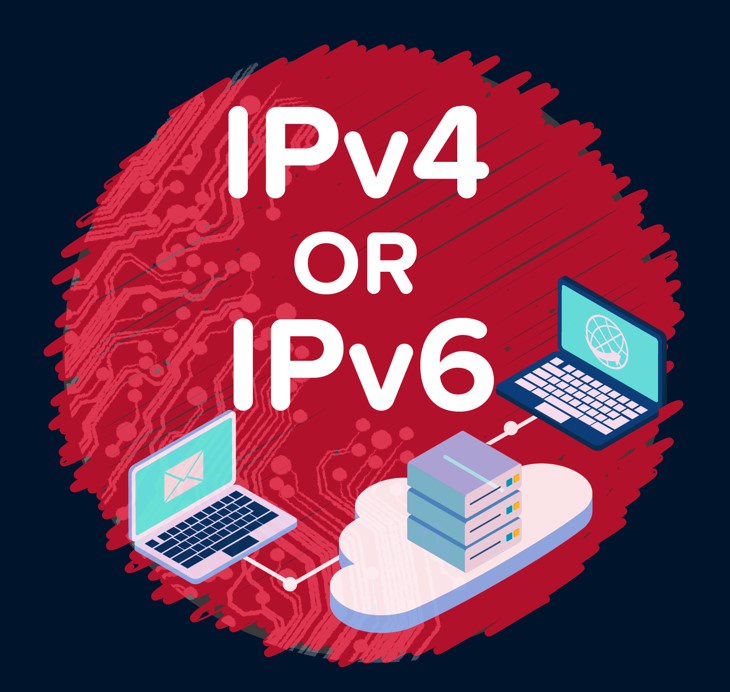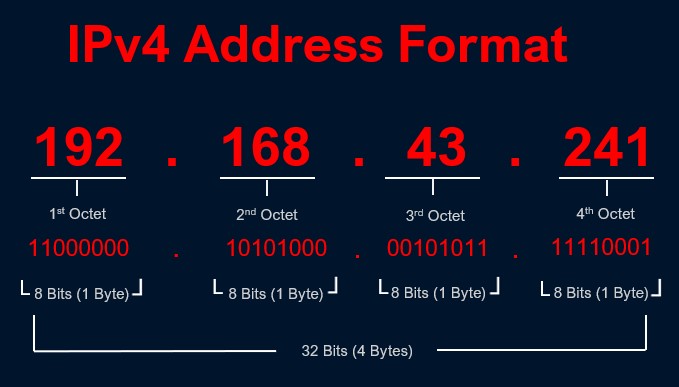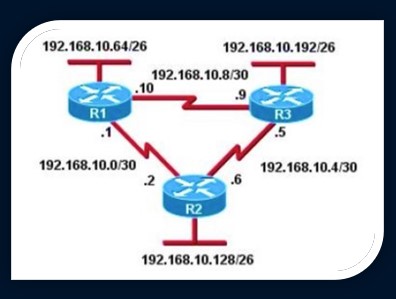IPv4 vs IPv6: Key Differences and Why It Matters
January 17, 2025

The Internet Protocol (IP) is the fundamental framework that allows devices to communicate over the internet. It serves as the address system, assigning unique identifiers (IP addresses) to devices such as computers, smartphones, servers, and even IoT devices. The two most widely used versions of IP are IPv4 (Internet Protocol version 4) and IPv6 (Internet Protocol version 6).
Although both protocols serve the same purpose—enabling devices to connect to each other—they have significant differences in terms of address space, design, and functionality. As IPv4 addresses become scarce, IPv6 is increasingly seen as the future of the internet. In this blog, we’ll explore the key differences between IPv4 and IPv6, how each protocol works, and why the shift to IPv6 is inevitable for the growth of the internet.
Address Allocation
- IPv4 addresses are becoming scarce, leading to address exhaustion. To alleviate this, organizations have been using Network Address Translation (NAT), which allows multiple devices within a private network to share a single public IP address. This has worked for a while but introduces complexities in routing and network management.
- IPv6 was designed to eliminate the need for NAT, as each device can have its own unique public IP address. With IPv6, devices can communicate directly with each other over the internet without the need for translation between private and public IP addresses.
Why it matters: NAT is a workaround to IPv4’s address shortage, but it creates complexities such as difficulties in peer-to-peer communication, troubleshooting, and network configurations. IPv6’s removal of NAT simplifies network architectures and enhances direct device-to-device communication.
Header Complexity
The header structure in IPv4 and IPv6 is designed differently, with IPv6 opting for a more efficient approach:
- IPv4 headers are relatively more complex, containing 12 fields that need to be processed by routers. Some of these fields are optional, adding to the processing time.
- IPv6 simplifies the header structure by reducing the number of fields to only 8, making packet processing more efficient. Some fields from IPv4 are dropped entirely or moved to extensions, streamlining the overall header and reducing router workload.
Why it matters: A simpler header in IPv6 leads to more efficient routing, reducing the processing time and improving the overall performance of the network.

Address Length and Format
One of the most notable differences between IPv4 and IPv6 is the length of their IP addresses.
- IPv4 uses 32-bit addresses, which are typically written as four octets (groups of 8 bits) separated by periods. For example: 192.168.0.1. This gives IPv4 approximately 4.3 billion unique IP addresses.
- IPv6, on the other hand, uses 128-bit addresses, written as eight groups of four hexadecimal digits separated by colons. For example: 2001:0db8:85a3:0000:0000:8a2e:0370:7334. This results in 340 undecillion (3.4 × 10^38) unique IP addresses, providing an almost unlimited number of unique identifiers for devices on the internet.
Why it matters: IPv4’s 32-bit addressing is simply not enough to accommodate the explosion of connected devices, especially with the rise of the Internet of Things (IoT). IPv6 solves this problem by offering a vastly larger address space.
Security Features
Security has always been a concern in networking, but IPv6 was designed with security in mind from the beginning:
- IPv4 has optional security features, such as IPsec (Internet Protocol Security), which can provide encryption and authentication of data. However, many networks and systems don’t implement IPsec by default.
- IPv6, on the other hand, mandates IPsec support, ensuring that encryption and authentication are available by default. This makes IPv6 more secure and better equipped to handle modern cybersecurity challenges.
Why it matters: As cyber threats continue to evolve, having built-in security in IPv6 ensures that communications over the internet are encrypted and authenticated, reducing the risk of attacks and data breaches.
Fragmentation Handling
Fragmentation occurs when large packets of data are split into smaller pieces for transmission across a network. How fragmentation is handled is another area where IPv4 and IPv6 differ:
- In IPv4, both the sending host and routers along the path are responsible for handling fragmentation. This means that routers have to reassemble and fragment packets as necessary, which can increase overhead.
- In IPv6, the responsibility for fragmentation lies solely with the sending device. Routers are not required to handle fragmentation, simplifying their operation and improving network performance.
Why it matters: By offloading the responsibility of fragmentation to the sending device, IPv6 reduces the processing burden on routers and leads to faster, more efficient data transmission.
Address Configuration
- IPv4 requires the use of a DHCP server (Dynamic Host Configuration Protocol) to assign IP addresses to devices on a network. This means that each device needs to request an IP address from the server before it can communicate on the network.
- IPv6 supports stateless address autoconfiguration (SLAAC), which allows devices to automatically configure their own IP addresses when connected to a network, without the need for a central server. Additionally, IPv6 devices can still use DHCPv6 for more advanced configurations.
Why it matters: Stateless address autoconfiguration in IPv6 reduces the reliance on DHCP servers, making network management easier and more streamlined, especially in large networks or in environments with many mobile devices.

Routing Efficiency
- IPv4 uses complex and often static routing tables, which can become cumbersome as networks grow. The limited address space also leads to inefficient IP address allocation, which can cause routing tables to be bloated.
- IPv6 supports a more hierarchical and efficient routing structure, reducing the size of routing tables. The vast address space also allows for more efficient aggregation of IP address ranges, leading to faster and more scalable routing.
Why it matters: IPv6’s improved routing efficiency helps keep the internet’s routing tables manageable, ensuring faster data transmission and better overall performance as the network continues to grow.
Transition and Compatibility
- IPv4 and IPv6 are not directly compatible with one another, meaning that devices using IPv4 cannot communicate directly with devices using IPv6 without some form of translation or tunneling mechanism. This is why networks are often configured to support both protocols simultaneously in a dual-stack configuration.
- As the internet continues to transition to IPv6, organizations need to ensure that their infrastructure supports both IPv4 and IPv6 traffic until IPv6 adoption is widespread enough to make the transition complete.
Why it matters: The transition to IPv6 will take time, and until then, organizations must plan for dual-stack networks, which can increase the complexity of managing networks. However, this transition is essential to accommodate future growth and the increasing number of connected devices.

The differences between IPv4 and IPv6 are not just technical—they represent a fundamental shift in how the internet functions. IPv6 provides a much-needed solution to the limitations of IPv4, offering vastly more address space, improved security, and better efficiency. While IPv4 will likely continue to coexist with IPv6 for the foreseeable future, the shift to IPv6 is essential for ensuring that the internet can continue to grow and support the increasing number of connected devices.
For organizations and network administrators, the time to start planning for IPv6 adoption is now. Understanding the differences between IPv4 and IPv6, and implementing a strategy for the transition, will help future-proof your network and ensure its scalability in the years to come.
Have Any Question?
Call or email Cocha. We can help with your cybersecurity needs!
- (281) 607-0616
- info@cochatechnology.com




